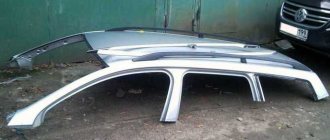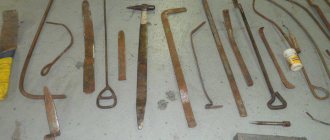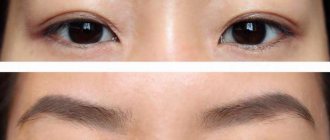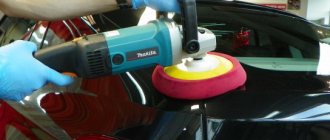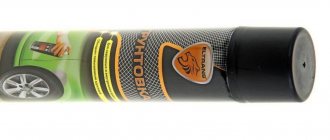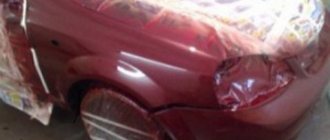Service in the North-Western Administrative District, Northern Administrative District, North-Eastern Administrative District, Eastern Administrative District, South-Eastern Administrative District, Southern Administrative District and South-Western Administrative District of Moscow carries out work to remove small and deep dents on cars of different brands, models and years of manufacture. We offer the most effective solutions for body restoration in each specific case, use advanced technological developments and high-quality consumables from famous world manufacturers, provide a guarantee and ensure affordable prices. We will professionally perform straightening of dents on the door, trunk, bumper, hood, roof and other elements of the car body without painting.
Why is it more profitable to remove dents yourself?
“Why not give the car for service?” - This is probably the first thing that comes to every car owner when he sees a dent on his car. But don't give in to expensive temptation. Think about what you get by leaving your car for “home treatment”:
Effective ways to remove dents
- By repairing your car yourself, you can save money and maintain your family’s budget;
- There are many car paint products and other novelties on the market that would help hide minor body damage.
- But there is very little specialized equipment for eliminating defects. Consequently, in services all this is done manually. This means that everyone can do it.
Straightening deformities with a soccer ball
This is a fairly simple and effective method that can be used provided that there is access to the inner surface of the deformed part. The soccer ball needs to be completely deflated and placed on the back side of the dent so that when inflated it rests against it and pushes the metal out. At the same time, it is not recommended to use compressors for inflation, since in this case you can overdo it and create a bulge on the surface of the body instead of a dent. A regular hand pump should be used.
To make the job easier, you can heat the metal with a hairdryer. Also, when installing the ball under a body part, it is advisable to wrap it with cloth so that it does not puncture when in contact with protruding metal parts on the inside of the dent.
How to remove a dent on a car?
The first method does not require virtually any additional technical means. All you need is a magnet and a soft cloth, preferably in the color of the car, so that it does not leave any stains. To restore your car's former shine, simply hold a magnet to the edge of the dent and pull it towards you. Then, in a smooth motion, simply drag it from the edge to the center. And the dent will disappear, and the main thing is that it’s fast and free. But this method of how to remove a dent is not suitable for all damage. You can only level small recesses that do not have broken edges or kinks. Often such dents are popularly called “poppers”.
An effective way to remove dents on a car
The next method of removing a dent on a car requires a little more skill and more technical means. To do this, you will need a non-professional device called a “suction cup with hot-melt adhesive.” To use this miracle to remove dents with your own hands, you need to select a suction cup of the appropriate size: it should be approximately the same as the indentation itself. We “sit” it on hot glue and wait until it is firmly attached. After this, we begin to smoothly pull it towards ourselves. And that’s it – there is no more dent.
You can buy this device at any store of tools and equipment for auto repair.
Another method involves using a hair dryer and a can of compressed air. But to do this, you need to remove the casing or the part itself so that you can access the dent from the inside. First you need to warm up this area with a hairdryer, and then direct air from a cylinder onto it. Under pressure, a small dent should disappear in a matter of seconds. This method is most suitable for eliminating minor irregularities on car doors.
Be sure to buy rubber gloves to protect you from injuries that may occur when your skin comes into contact with compressed liquid air.
Straightening out dents using heat and subsequent cooling
The point of this method is to warm up the damaged area of the body with a hair dryer, and then sharply cool the metal. The technology is based on the phenomenon of thermal expansion of materials. When the metal heats up, the part expands slightly; when cooled, the reverse process occurs - shrinkage. In this case, the excessive stress that has arisen in the dented area is quickly removed, and the part is leveled, taking its original shape.
This method is advisable to use when eliminating relatively small deformations. For example, it is perfect for removing dents caused by light impacts with hands, soccer balls, etc.
Heating can be carried out either with a construction hair dryer or with a household hair dryer. For cooling, you can use cans used to blow dust out of computers. If possible, you can also use dry ice.
The sequence of actions is as follows:
- Before starting work, it is necessary to thoroughly clean the area being treated from various contaminants that may interfere with the full heating of the part. To do this, you can use a regular soap solution.
- Using a hair dryer, it is necessary to warm up the central area of the dent for 30-60 seconds, making circular or spiral movements with the heating device. The contours of the damaged area should not be heated, otherwise the effectiveness of the method may sharply decrease.
Not all motorists have construction and household hair dryers. Therefore, alternative methods, for example ordinary hot water, can be used to heat the metal. But the disadvantage of the method is that not only the central part of the damaged area, but also its contours can be heated, which can make the work more complicated.
- After heating, you need to wait a few seconds, then use a spray can to cool the areas around the perimeter of the dent for 10 seconds. The nozzle or tube should be kept at a short distance from the surface - about 3 cm.
- When using dry ice, it is recommended to wear protective gloves to prevent frostbite on your hands. You can also use a towel or a piece of regular lint-free cloth.
- At the final stage, it is necessary to wipe the metal surface and remove any condensation that has formed from it. If the dent has not been completely removed, you can repeat the process. To achieve the best effect, gently tap along the perimeter of the damaged area.
How to remove a large dent?
For large dents, drastic intervention will be required (a magnet and a suction cup are no longer enough). You will need a small hammer with a round rubber head. Before you begin, you need to remove the damaged part. If this is not possible, then you should unfold it in such a way as to have access to the convex side of the dent.
Lay a soft cloth on the work surface and place the damaged element on top. After this, you can start tapping with a hammer. The blows should be light so as not to cause sudden deformation, which will lead to paint shedding. We continue to tap until the product takes its original form.
After completing the alignment, you need to return the part to its place and wipe it a little with a cloth. If you find any residual unevenness, you can try to smooth them out with light finger pressure.
Repair methods
Straightening dents is carried out not only from the inside, although this seems the most logical, but also from the outside. The technology of work largely depends on the area of damage and its location.
Firecrackers
This is what tinsmiths call dents that are large (up to several square decimeters) in area, but small (no more than a centimeter) in depth, with very gentle slopes. The metal in them has hardly changed in thickness. They got their name because straightening is accompanied by a clap.
The larger the area of the cracker, the easier it is to straighten.
Although this can be explained simply: the lever arm of the force - the distance from the center of the dent to the edge - is large. Sometimes it is enough to press it from the inside with your palm. Often it is a combined damage - at the point of application of force there remains a hole, which will have to be straightened separately.
Removing small dents with an impact tool
Fixing from the inside is the main way to repair such dents. To do this, you will have to remove the ceiling or door trim - the usual place for firecrackers to appear. If it does not lend itself to hand force, then, for example, a volleyball chamber can be placed in the technological cavity. A pressure of a couple of atmospheres will be quite enough. Small - you can still touch the metal with your hand - heating the edges will help speed up the process.
Medium dents
It is often not possible to straighten such a problem from the inside. For example, on a wing, the cavity of which is blocked by spars. If it is flat, without a break, then heating and hammering it through a trowel will help fix it.
- Heat the edges of the dent so that your hand feels noticeably hot when touched.
- Apply the trowel, making sure that it lies flat and does not touch any part of the body's relief with its edge. Tap the dent in a circle with light blows.
- Constantly control the heating (cooling is no better than overheating), don’t rush anywhere and persistently hammer the dent in a tapering spiral.
The construction trowel successfully replaces the professional tool “trowel”. Its handle is raised up, does not move around the body and does not interfere with the work of the hammer. It should be made of stainless steel, and the lower, working surface should be polished so as not to scratch the paint. During work, you must constantly wipe it with a cloth so that not the slightest speck remains on it, and degrease it.
Removing dents on the body surface using heating
There is a very exotic straightening method based on the use of temperature contrast. For it you need to prepare a can of carbon dioxide. These are used, for example, to charge airsoft weapons.
- Heat the dent in a spiral from the edges to the center.
- You spray carbon dioxide using the same principle.
- As the frost disappears, the metal straightens, subject to deformation forces arising from temperature changes.
Leveling in this manner may damage the paintwork. And the older the car, the higher the likelihood of such an outcome.
Small dents
Damage with a diameter of up to 1.5 centimeters can only be pulled out, since they are smaller than the hammer head and aiming along the edge is very problematic. Pulling is carried out with a bolt or screw with a head of suitable diameter and shape. It needs to be sanded to the desired configuration and polished.
The work area is degreased (as is the bolt head), after which the glue gun is used. After gluing the bolt, add glue on top, for reliability. The thread will help secure something like a handle or eyelet. The bolt is pulled behind them with whatever is available. But this must be done carefully, in several stages, constantly monitoring the process. The bolt may come off. Remove the adhesive with a solvent and repeat the process until the dent is straightened.
For such work, there is a professional tool - a set of polymer fungi of different sizes and shapes, as well as strikers. The firing pin consists of two parts - something like a bolt, the lower part of which hooks onto the figured protrusion of the fungus, and a massive bushing that slides along the stem. At the end of the striker there is a wide protrusion against which the bushing strikes.
Straightening a car body is an art. The master must feel the material and be able to predict its behavior. The skill is formed by long hours of training. Don't be afraid to put your hands in, though. The value of having such a skill will pay for all the costs. We advise you to initially practice on some car frame.
Removing dents without painting the car
Removing dents without painting will quickly return the body surface to its original condition. Naturally, the appearance of dents on the body of a car causes unpleasant emotions for its owner. And no matter how hard you try to take care of your beloved car, no one is immune from troubles, even the most careful driver.
The technology for removing dents without painting has become widespread today. Day by day, motorists' interest in this revolutionary process of restoring body parts is growing.
Leveling out dents with a reverse hammer
Such a device can be easily constructed in a garage. To create a reverse hammer, you will need a strong rod up to 5 mm thick, as well as a piece of metal pipe. At one end of the rod you need to fix a stopper that will not allow the pipe to slide off the rod. The other end is hot glued to the dent.
This tool is used in the same way as the pulling elements described in the previous method. But the main advantage is the greater force on the metal, since this involves not only the physical strength of a person, but also the inertia created by a massive piece of pipe. This technology is optimal for removing small and medium-sized dents on body parts.
What dents can be removed without painting the car?
- bottles, apples, icicles, hail, snowballs falling on the car;
- unscheduled parking;
- careless opening of doors;
- external pressure of hands and feet on the body element.
Modern equipment and the skill of a bodyworker can easily remove a dent of any size. It is important that the paintwork is not damaged and the degree of metal stretching is small (read about the main types of body repairs). Only a qualified specialist can accurately determine the possibility of paintless dent removal. He will also tell you the exact price for the upcoming repairs.
Benefits of removing dents without painting your car
The new method of removing dents without painting has already caught the fancy of many motorists. More and more owners of cars with body damage are using this service for a number of reasons.
- Firstly, body work is completed quickly. With traditional body repair technology, you need to wait several days for your car. This is explained by the fact that each layer of putty, primer and paint applied must completely dry and harden, after which the car is also painted. And this takes a lot of time. Removal of dents using modern technology occurs within 15-90 minutes. During this time, the car owner can drink a cup of coffee or tea, and also make a few important phone calls.
- The second important advantage of painting-free dent removal is the availability of the work. The formation of the cost of work is not influenced by such expensive materials as putty, paint, varnish, etc. Typically, such dent removal costs the owner 2 times less than with traditional methods of body repair.
- Most often, dents can be removed without dismantling body parts and interior trim. But when repairing the roof, as well as in the absence of free space, specialists resort to removing the trim, lights and body elements themselves. But the factory paint retains its protective functions after such restoration.
- Some car repair shops provide an approximate estimate of dent removal based on photographs. To do this, the owner just needs to take a photo of the damaged area of his car and send the image by email. The driver will only have to make an “appointment” and take with him the required amount of money.
Percussion
You can straighten and completely remove a medium-sized dent by tapping it on the back side with a rubberized mallet. However, to do this you need to have access to the damage site. In the case of a door, this will require removing the door panel. Typically, repairs using this technology are carried out with mallets of various sizes, and to seal areas that are not accessible from the inside, hooks are used. However, in this case, traces will remain of them, which distinguishes this method for the worse from others discussed in this article. Read on to find out what else you can use to straighten a dent.
The history of the emergence of paintless dent removal technology
It is generally accepted that the technology for removing dents without painting a car appeared in Germany in the 1950s at the Mercedes-Benz factories.
This is interesting: If a slow-moving vehicle is driving in front of you. When and in what cases is overtaking allowed?
The inventor of a new method of dealing with dents, Oscar Flyg, first used it at automobile exhibitions in America and Germany. Overnight, the bodybuilder managed to eliminate all the damage to the exhibition exhibits that appeared due to the negligence of numerous visitors. Later, a special tool for this type of body work was designed and manufactured.
There are several designations for paintless dent removal technology:
- PDR (Paintless Dent Repair) is an English designation.
- DOL (Dellen Ohne Lackieren) is a German designation.
Both translate to paintless dent repair.
How to remove a dent without painting the car
The principle of removing a dent on a car body element is quite clear and simple:
- It is necessary to create pressure on the convex surface with massaging movements from the inside. This is done using special metal rods and hooks. They are equipped with comfortable non-slip handles and a set of tips. In the hands of a professional, such simple tools can work wonders.
- Qualified craftsmen use special lamps to detect dents and visually monitor the progress of straightening. The reflection of the light from the lamps makes it possible to accurately determine the boundaries of the damaged area.
- To pull out a small dent with your own hands, car enthusiasts most often use special kits like Pops-a-Dent and the like. In some cases, they allow you to independently eliminate geometry violations, returning the body to its original appearance ( see the video below for an example ).
- After removing the dents, the body element is polished, if necessary. It is designed to eliminate stains left by the tool and the hands of the master.
Well, now we know that removing dents without painting greatly simplifies car body care. Both bodybuilders and motorists will benefit. The absence of dust and solvent vapors improves the microclimate in the workshop premises, and the driver enjoys quick body repairs and saving a significant amount of money.
Features and Benefits
From the very beginning of its existence, PDR technology was extremely simple and did not allow eliminating serious defects on the body. Over time, it has been improved, so now it is possible to cope with fairly large dents and restore the previous quality of the body metal without damaging the paint layer.
The method is extremely simple, since now there is a special tool for it, a full set of devices. Some even decided to buy it for themselves, using it in the garage with their own hands.
But I’ll be honest, to remove small dents, you can try your luck and try to do everything yourself. But the technology has its own characteristics; craftsmen undergo special training to restore the car to the highest possible quality. You can practice on cars that you don't mind. And so they advise entrusting the process to specialists, whose address will not be difficult to find in your city.
The main advantages of PDR technology include:
- no need for painting work after removing a dent;
- little time spent on repairs and removal of defects;
- easy-to-perform local body repairs;
- a small number of stages required to carry out the work;
- affordable price, which is noticeably lower compared to traditional straightening, which additionally requires painting;
- maximum preservation of the quality of the paintwork on the car body;
- no need to look for paint to match the body color.
But you shouldn’t naively think that this is a magical method that allows you to carry out body repairs with one movement of your hand. The technology has its own nuances and certain limitations.
Do-it-yourself technology for completely removing various sized dents without painting
Each motorist, in one way or another, faces the problem of dents forming on his iron friend. And the most unpleasant thing in this situation is that the car, even if it has very minor damage, has to be left at the service station for several days. Therefore, many of us try to do dent removal without painting ourselves.
The most effective DIY dent removal technique
And here the question arises, which body repair method is the cheapest, most reliable, effective and fastest? In the old days, regardless of whether the paint layer was damaged or not, straightening work was carried out followed by repainting the damaged part. Even now, many car owners and service stations use similar technology. However, a more gentle and economical method of removing dents has long existed, in which the paintwork remains intact.
This requires special tools. In shape it resembles levers, hooks and clubs, having different shapes, sizes and lengths. By introducing them into the technological holes on the body, and applying certain forces from the inside, you can return the metal to its original shape.
This technology for removing dents without painting is most effective when restoring parts that cannot be reached with ordinary tools, for example, door pillars or bodywork. In addition to levers, you can also use vacuum hoods if the dent is very small. They are applied to the damage, and with the help of a pressure difference the metal returns to its place.
Applicators fixed with special glue are also effective. They create the necessary leverage for the applied force. Next, a mini-lifter is applied to the applicator, with the help of which the shape of the part is restored. Traces of adhesive can then be easily removed.
The whole complex of these techniques is called PDR - Paintless Dent Repair, in Russian - “removal of damage without painting.” This method of body repair became possible, first of all, thanks to the beginning of the use by the global automotive industry of paint coatings based on polymer compounds. The structure of the paint layer has acquired strength and flexibility, remaining intact even with severe damage to the body.
The recent use of stronger and thinner metals in the production of cars has also played a role. As a result, painting-free car dent removal using the PDR method is becoming increasingly popular.
Correction with a magnet
Repairing dents on a car without the need for painting using a magnet is one of the easiest ways to restore the surface of parts. For pulling, a magnet is used, which can be purchased at an auto parts store. It has enough strength to straighten small dents. This method removes shallow dents. If the defects are more serious, use another method.
Leveling damage with a magnet on a car is carried out in three stages:
- a cloth is placed between the magnet and the damaged surface to protect the paintwork;
- the magnet is attracted to the edges of the dent and gradually pulls back;
- the tool must be moved around the circle of damage until its central part is reached.
Under what conditions is it impossible to use PDR technology?
Paintless Dent Removal Tool Kit
Depending on the size, depth, location of the damage on the body, in addition to the condition of the paint layer and the thickness of the metal of the car, methods for tightening it can be divided into external and internal. In other words, you first need to carry out a visual inspection of the car and assess the damage. Next, choose a repair method without painting the body, if, of course, it is possible.
The technology for straightening dents using the PDR technique is extremely difficult or impossible if:
- The paintwork is damaged
- The body has too much deformation
- The paint layer is of poor quality
- The car is more than 15 years old
- Previous body repairs were carried out by amateurs and in violation of technology
And vice versa, a very small dent, the size of a coin, can be so deep that you will not be able to restore the shape of the body without subsequent painting, since the metal is too tight. And the main sign of this is missing paint at the deepest point of damage.
Also, corrections without painting are almost impossible:
- Car door sills, a rare exception (5% of cases), when the damage on them does not have sharp creases and is gentle
- The edges of the trunk, hood and door elements, since they are usually welded and glued, therefore it is impossible to get inside them with a tool, such a defect can only be slightly reduced
- Car roof pillars when there are sharp creases on them
- Those damages on the panel that were caused by pressure, indirect impacts, or when the body was tilted
Return to contents
Leveling body parts using a vacuum cleaner
To use this method, you must have a fairly powerful vacuum cleaner (household or construction). You also need to select a flower pot or bucket in advance that can completely cover the damaged area on the body. To ensure a sealed contact between the pot and the surface of the body part, you will need adhesive masking tape or tape. You also need to prepare soapy water, an old unnecessary towel and a sponge - this will be needed to clean the metal from dust and third-party contaminants, due to which the tape and adhesive tape may not adhere well to the part. The edges of the pot can leave scratches on the paintwork, so they should also be covered with tape or adhesive tape.
Before starting the procedure, you need to make a small hole at the bottom of the pot, the diameter of which should correspond to the diameter of the vacuum cleaner hose. If there are additional drainage holes, as in most flower pots, they should be sealed.
Next, you need to place the pot on the defective area of the body so that the entire dent is under it. It must be glued to a previously cleaned surface to ensure complete sealing and avoid air leaks when the vacuum cleaner is turned on.
When the vacuum cleaner is turned on, a reduced pressure is created in the pot, as a result of which the dented metal is pulled out and returns to its original position. If you have access to the back of the damaged part, you should gently press on it to enhance the effect and help the dent to align.
How to remove dents?
An extremely important point: if you want to master the PDR technique, before removing a dent without painting, experts advise practicing on parts that are no longer suitable for anything. In this case, your main task is to learn to feel the metal and press at the right points, following a certain technique for weakening and increasing stress. Otherwise, you will overtighten the metal, which will result in damage to the paintwork.
Before work, carefully inspect your vehicle. Damage can be of various types, and the methods for correcting them are also different. It is extremely important to establish how severely the body geometry is deformed.
Select the location where you will carry out the repairs. The best option is to inspect the car outside, in clear sunny weather, and carry out the body work itself in the garage, where nothing will disturb you.
Care should be taken in advance to ensure that the lighting during repairs is sufficient and effective. Therefore, in addition to stationary lamps, you will also need a portable fluorescent lamp on a flexible leg and with a vacuum suction cup. With its help, you can inspect the car while working from different angles.
If necessary, carry out reinforcement work, that is, remove the casing, dismantle elements that interfere with the repair, etc. As already mentioned, hooks for straightening dents have completely different shapes, lengths and angles of the working part. In professional sets their number reaches 40 or more copies. Select the most appropriate lever for a given injury. Insert it into the technological hole and, using careful pressing movements, return the metal to its original place.
This is interesting: Test.Bad
When it is impossible or very inconvenient to get to the damage from the back of the body, then vacuum or adhesive technologies are used. In the latter case, applicators (pistons) of different shapes are glued onto the dent, depending on the configuration of the defect, and then the metal is pulled out by a mini-lifter with your own hands.
As for body damage, the site of which has been straightened or repainted, the possibility of using PDR equipment to remove it is determined during inspection of the defect. When there is no putty in the damaged area, this technology can be safely used. If the area where there is a dent has already been repaired and primed, then PDR will not help - the putty will simply crack and fall off.
In this case, you can only try to minimize the depth of the dent to an almost imperceptible level. When the defect is very small, do not rush to use hooks. Often it is enough just to gently tap the repaired area with a rubber hammer.
At the same time, with your other hand, on the reverse side of the damage, control the entire process of straightening the body metal. If this is not enough, additionally use a wooden block or special mandrels. They must be wrapped in rags in advance. Apply the timber or mandrel to the damaged area, parallel to this, on the reverse side, often tapping the defect with a hammer. If you are persistent and, most importantly, attentive, the damage will soon disappear.
Experts recommend purchasing a set of rubber hammers with a rubber working part, which have different sizes and shapes, so that you can straighten dents of various configurations. When the area being repaired is difficult to reach with a hammer, then you can use hooks. After you have fixed all the dents in one way or another, they will need to be polished. Very shallow and small scratches can be easily removed using an abrasive method using special polishing.
To make it easier for you to understand the essence of the technology, on this page of the site we post material: removing dents without painting, video tutorial.
External alignment
In this way, you can repair all dented parts that can be accessed from the outside, including doors. There are several options for removing defects using this technology. One of them is carried out using glue and special equipment, represented by an applicator and a mini-lifter. Repairs begin by gluing the applicator to the damaged area. After the glue has completely dried, you need to pull out the central point of the dent with a mini-lifter, and at the end of the work you need to remove the remaining glue from the car body.
Following the same principle of straightening dents from the outside of the part, you can pull out the defect with a piston or similar non-specialized devices, such as suction cups. As in the first case, the surface of the dent needs to be sealed with glue and a suction cup attached to it. Repair of the defect is carried out by pulling out after the glue has completely dried.
Another way to remove dents from the outside, also based on pulling them out, is to use a magnet. The repair consists of moving it across the defect area from its center to the edges, pulling it towards itself.
To avoid damaging the paintwork, place a rag under the magnet. It should be borne in mind that only a small dent can be corrected using this method.
The next method of externally straightening dents differs in principle from those discussed; it is based on temperature differences. Such repairs are carried out using a hair dryer and a can of compressed air. Moreover, to repair a dent in this way, you will need a powerful hair dryer capable of creating a temperature of 300-650 °C. Repairs begin by heating the surface of the defect, then immediately blowing it with a can of compressed air. A large temperature difference (more than 350 °C) leads to straightening of the dent. Depending on the size of the defect, this operation may have to be performed at several points.
If after this work there are traces of dents, they can be removed by tapping with a mallet. In this case, the damaged area should be covered with a soft rubberized material to avoid damage to the car’s paintwork.
How to remove a large dent without painting yourself
Many car enthusiasts are wondering how to remove a dent on a car without painting with their own hands, but in this article you can find the answer to this question. So we have a large dent with a bump and slightly stretched metal, as in the photo.
Attention, all work with the adhesive kit must be carried out on a degreased element. That is, you first need to clean and degrease the surface. First of all, let's seat the dent.
The element must be heated, as hot as possible, until the paint or varnish is on the edge. We are looking for the breaking point, in our case it is here.
We take an ordinary trowel from a department store and begin to smooth out the break point. You also need to take a plastic or rubber hammer and begin to settle this place.
With these movements we seat the bump.
We heat up the glue gun and begin gluing the fungi to the body. When you pull, be sure not to knock.
By the way, you can buy black and blue glue on eBay. It is black for shock, and blue for stretching. So we just glued two umbrellas and pulled the first one.
Look what we got.
So we have leveled the dent, thanks to the shrinkage of the correct point.
The most important tip when leveling dents with your own hands is to find the point of tension and smooth it out because it holds the entire crease. We remove fungi with any alcohol-containing solution. Sometimes, if you know for sure that the element is unpainted, then you can drop a drop of acetone on the fungus.
Removing dents using a plumbing plunger
This tool can be used not only for its intended purpose (for cleaning sinks), but also for doing body repairs yourself. Suction cups, which are used in household plungers, are attached quite tightly to smooth metal surfaces. This allows you to create a lot of force when aligning dented parts of the body.
Before using the plunger, it is necessary to moisten its rubber part, and also clean the body part being processed from various contaminants. To do this, it is recommended to use hot water, which will make the rubber more elastic and the metal more pliable. If the dent does not have sharp creases, it can be easily removed using this method.
How to remove dents on a car?
1. If the dent is almost invisible (on the doors or hood of the car), then proceed as follows: heat the affected area with a hairdryer, after which the dent is corrected with compressed air. The surface must first be cleaned, the sound insulation must be removed and the interior trim must be removed, and the glass must be completely raised.
If there is a deep dent in the car door, disassemble the door trim and, if necessary, remove the door. Prepare a block of wood measuring 10 by 20 cm, a rubber hammer and a regular hammer. You will also need clean rags. Level the dent from the inside with a block wrapped in rags, which you lightly tap alternately with a rubber and regular hammer. After the defect has been eliminated, the surface should be degreased, plastered, puttied, primed and polished.
2. If a concave dent on a car does not have sharp edges and does not touch the stiffening ribs of the body, then a deflated basketball or soccer ball, as well as a bicycle pump, will come in handy. Place the ball between the frame and the dent and pump it up. After straightening the metal, deflate the ball.
3. Straightening. This method can eliminate dents on the fender or body of a car. You will need a hydraulic or rack jack, various extensions in the form of a square welded from two corners, or parts of a thick-walled pipe, a straightening hammer, and large wooden blocks.
Fixing a dent on a car fender. Before starting work, remove the wheel from the vehicle on the side of the defect. Place the jack on support. Place a block at the back and directly on the stiffening rib under the wing. Next, we insert a jack with an extension attached to it between the bars. Move from the edges to the center. From the inside, using circular movements, begin to smooth out the dent, spreading the wing out. Then straighten it by tapping it with a hammer from the inside and providing support from the outside. It is ideal to remove a dent if you start the repair from the stiffening rib. Do not loosen the jack abruptly immediately after completing the repair: first tighten it a little, and only then remove it. Determine the boundaries of the dent as follows: draw a straightening file across its surface crosswise.
